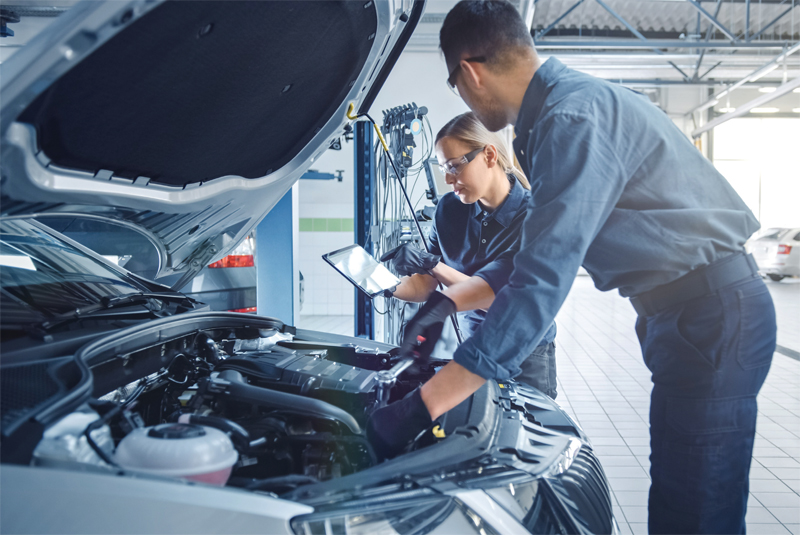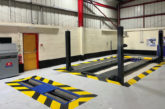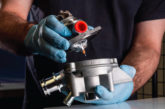
Steve Scofield, Head of Business Development at the Institute of the Motor Industry (IMI) looks at the myriad challenges – and opportunities – facing the MOT sector after eighteen months of upheaval as we begin the road to decarbonisation.
An ageing car parc, a significantly increased workload as a result of the 2020 MOT extension, an already immense skills shortage and the transition to hybrid and full EV as part of the government’s road to decarbonisation. The challenges for the MOT sector cannot be underestimated. But the opportunities for the aftermarket as a whole also need to be embraced.
The MOT extension granted last year has structurally changed the market, to the extent that aftermarket analysts, GiPA have stated that 60% of all MOTs required in 2021 will be due between July and December. The figure for the same period before the pandemic would have been 47%. In September alone garages face an estimated 580,000 more MOTs than in a normal September.
That’s quite an uplift when also factoring in the workforce challenges that garages have faced – not just as a result of the pingdemic but already casting a long shadow over the sector are the consequences of the slowdown in recruitment and apprentice uptake in the last 18 months. Whilst the most recent (June) IMI analysis of the current job recruitment trends in key occupations within the automotive retail sector, based on EMSI job postings, shows that job postings across all automotive occupations increased in the past two months (with the exception of Fitters which saw a small decrease), with job postings for technicians, valeters and corporate managers now at levels higher than 2019, the skills gap is still significant.
Communications and customer service top the skills chart
Of course, the uplift in demand expected for the second half of the year will make up for a quieter than normal start – but there’s still no getting away from the fact that the ‘feast or famine’ environment will be challenging for some operations, and especially the smaller, independent garages reliant on just a few qualified personnel. Managing customer expectation in this context is, therefore, going to be crucial. As such, it is especially encouraging that our own analysis of skills requirements for job postings has seen communications and customer service as the top skills.
The COVID restrictions on the number of technicians working on a vehicle have now been lifted – enabling a faster turnaround of work. And the sector has progressed leaps and bounds in using video technology to give customers insight into where additional work is required as a result of the MOT – again reducing delays in getting work out the door. But against a backdrop of an older car parc – the SMMT reported earlier this year that the average car on UK roads is now 8.4 years old – and the enormous new car supply issues not likely to do much to reduce that age in the coming months, businesses right across the aftermarket sector should also see the opportunities, as long as they focus on continual professional development and training.
Of course MOT training and assessment is mandatory – and one positive to take from the reversal of the normal MOT pattern is that the usual Spring surge for MOTs is likely to be much less in 2022. This will give technicians the opportunity to get their training and assessments completed well ahead of the DVSA deadline of 31st March.
But every good garage will know that the MOT often drives additional work. According to GiPA, 56% of all MOT tests performed in 2019 were carried out with extra work. eDynamix recently reported that the average additional customer spend on an MOT visit was £85. That all puts even greater emphasis on skills development that needs to be factored in alongside managing workloads.
I don’t believe that’s a bridge too far, if garages tap into the ever-growing resource of online training tools now available. For example, the IMI MOT Training and Assessment tools are based on a philosophy of e-Learning. And we have teamed up with VOCANTO to deliver a range of light vehicle and EV training courses online.
Garages should also be building their pipeline of talent for 2022 and beyond. The most recent analysis of job vacancy data by the IMI shows significant numbers of job vacancies in the MOT network. But by working with IMI centres and recruiters building a skills funnel which offers Level 2-3 college students a route into the automotive industry there is a real chance to tackle this.
Lastly, we come to the road to decarbonisation. The ramp-up in hybrid and all-electric sales over the last year means that it won’t be long before these vehicles are entering the MOT sector. But is the sector ready? Sadly, I think that’s quite unlikely, with just 6.5% of the entire automotive workforce currently qualified to work on electric vehicles. It’s estimated that the electric vehicle population will accelerate to 10.6m in the next decade – in order to safely maintain that number of vehicles, the UK will need around 75,000 technicians with the skills to work on EVs and a good proportion of those will need to be able to handle EVs. Now, therefore, is the time for the skills transition to EV and Hybrid, with technicians attaining a blend of level 2 and 3 EV qualifications.
There’s no question the MOT sector faces a really challenging few months. But I firmly believe, with a focus on skills training, not just of the technical skills but the soft skills of customer service and communications too, it can reap the rewards.









